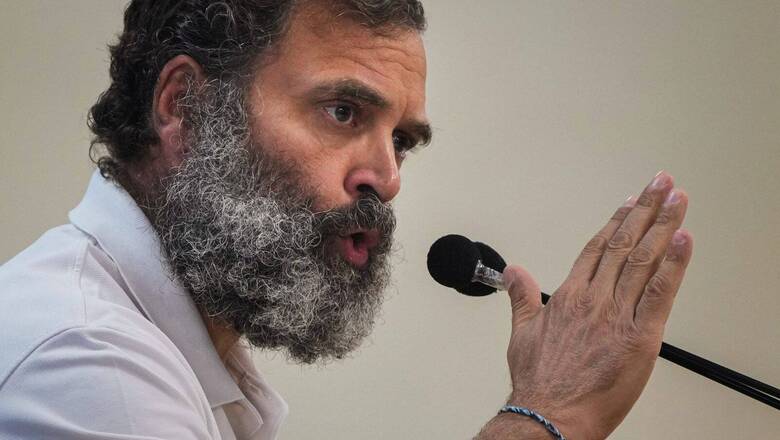
views
Rahul Gandhi’s Lok Sabha speech on Tuesday, to be fair to him, was a decent one. He spoke well, didn’t fumble that many times, and kept his aggressive tempo in sync with the content of the speech. One could see a confident Rahul, who was more secure in his skin. His critics may call it his dynastic recklessness — ‘I am like this, so what’ attitude — but the fact is there’s a change in Rahul’s attitude after his Bharat Jodo Yatra.
The problem, however, remains with the content, which often has very little resonance across the country. An even bigger problem is his idea of India which is far distant from how the majority of Indians see themselves. His rootlessness is further magnified when Prime Minister Narendra Modi takes on him—as he did quite clinically in the Lok Sabha on Wednesday and the Rajya Sabha a day later.
Rahul, to his misfortune, is caught in a time warp. He seems to believe — or has been told to believe by his advisers led by one whose name often reminds one of the BJP slogan at the height of the Ram Mandir movement — that India is still Indira and Indira is India. He fails to realise that today’s India is an aspirational one. He fails to realise that the idea of new India amalgamates a truly modern nation with an innate civilisational soul. It no longer loathes money and distrusts the invisible hands of capitalism.
So, when Rahul rubs an old communist bottle to bring out a powerful anti-capitalist genie, by disdainfully invoking Adani, it has very little resonance with the masses, especially the youth. His great grandfather, Jawaharlal Nehru, might have told JRD Tata — “Jeh, profit is a dirty word. Let’s not spoil our lunch by talking about it!” — and gotten away with it, but that cannot be the case in 2023, more than three decades after PV Narasimha Rao, one of the best Prime Ministers of the country, unshackled the invisible hands of capitalism in the summer of 1991.
In fact, this distrust for market, individual entrepreneurship and profit is not an Indic phenomenon. Donald R Davis, Jr, an associate professor of Sanskrit and Indian religions at the University of Texas in Austin, during the release of his 2017 book, The Dharma of Business, told me how this mindset and the consequent Licence Raj between 1947 and 1991 are “an aberration in India’s long economic history”. In the Indic worldview, labh (profit) was a good word, lobh (greed) wasn’t. “Dharma texts make a distinction between labh and lobh. The purpose of business is not only to make profit but also to do it righteously,” Donald said. No wonder for most part of recorded human history, India was the economic powerhouse of the world, followed by China.
Rahul seems to be still stuck with the obsolete Leftist-Nehruvian order where labh and lobh are equivalent. New India, waking up to its old, timeless civilisational moorings, is antithesis to this worldview. For a young Indian, an entrepreneur is a hero, who he emulates and wants to be like him one day.
But then how did Rahul fail to feel the pulse of the masses, especially the youth, despite conducting a countrywide Bharat Yatra from Kanyakumari to Kashmir? Maybe he was a victim of what VS Naipaul famously called in his 2007 book, A Writer’s People, “Looking and not seeing”. This is the tendency of being indifferent about the outside world and compensate for that by aggressively and obsessively turning inwards. Rahul, while being on the yatra across the nation, thus failed to see the new India. He could see what he wanted to see. To add to his woes, he was joined by usual suspects like Raghuram Rajan, AS Dulat and Pooja Bhatt, who further added to Rahul’s blindness.
Rahul’s biggest failing, however, has been his refusal to learn from his biggest adversary — Narendra Modi. Everyone knows about Modi being an instinctively organisational man. “You put him in any place and he delivers. Look at him: Before 2001 he had never fought an election, and after 2001 he has never lost one,” Modi biographer Ajay Singh told me recently. Even someone of the calibre of the late Pramod Mahajan had to concede to LK Advani, during the Gujarat leg of the latter’s countrywide Rath Yatra: “Don’t expect this (Gujarat) kind of response in Maharashtra!”
But beneath the glitz of his organisational skills lies the perseverance and hard work of Narendra Modi. And, despite all this, if things don’t go his way, he is not averse to making a U-turn. He did exactly that on the issue of the farm reforms when he saw the issue being exploited by anti-India forces to divide the country. He not just revoked the new farm laws but also apologised to the nation for his failure to explain the benefits of the legislation.
Ajay Singh writes in his book, The Architect of the New BJP, how Modi, with no administrative experience, soon after becoming the Gujarat chief minister in 2001, was not hesitant in learning from the babus the art of running the state. “He silently observed the functioning of each institution of governance in order to comprehend the complexities of administration. Officers who worked with him closely back then testify that he is an incredibly fast learner,” Singh writes.
Which CM, after all, would attend a two-day conference of district collectors — not as a participant, but as an observer? Modi did exactly that. “Taking a seat in the back of the auditorium, he allowed the conference to go on in its own flow. He tried to understand the manner in which the district collectors and senior officers interacted with one another on the issue of governance, and how issues of even village and taluka levels were discussed and resolved.”
The latest example of Modi being a fast learner is his sartorial preference during the ongoing parliamentary session. On the day Congress leader Mallikarjun Khadge was mocked for a Louis Vuitton scarf worth Rs 56,332, PM Modi was seen wearing a jacket made from recycled PET bottles! Interestingly, a few years ago, PM Modi was criticised for wearing a swanky Rs 10 lakh suit, inviting relentless attacks from the Opposition led by Rahul Gandhi, who accused the BJP government at the Centre of being a “suit-boot ki sarkar”. Modi has since been careful with his sartorial choices.
If Rahul finds it difficult to learn from Modi, he could have at least taken a cue from Mahatma Gandhi who, soon after coming from South Africa in 1914, went on a Bharat darshan. He took passenger trains, travelled in a third-class bogey, stayed among the masses, and ate and slept among them. He got himself completely submerged among the masses. Rahul, instead, remained the other. He would run, do push-ups, show his martial arts skills, grow a beard! For ordinary Indians, he remained an exotic being. For millennials, he seemed to be an off-screen avatar of Lal Singh Chadha. The Aamir Khan-starrer flopped badly at the box office. Rahul, if he still doesn’t mend his ways, will fare the same fate at the electoral box office. His desire to fight the 2024 elections on Adani may go the Rafale way of 2019! However, the good thing for Rahul is that he still has some time to mend his ways.
The author is Opinion Editor, Firstpost and News18. He tweets from @Utpal_Kumar1. Views expressed are personal.
Read all the Latest Opinions here












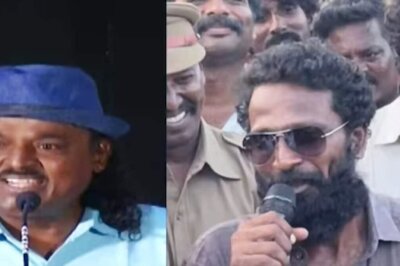
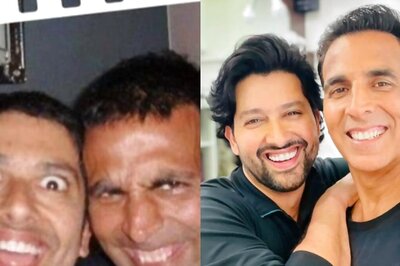


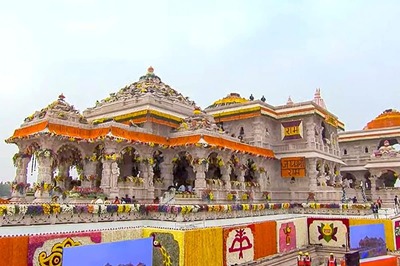
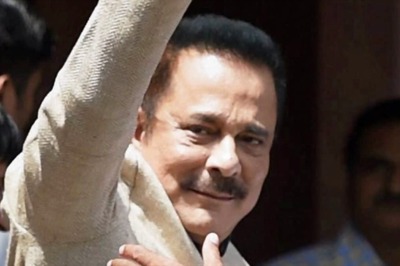
Comments
0 comment